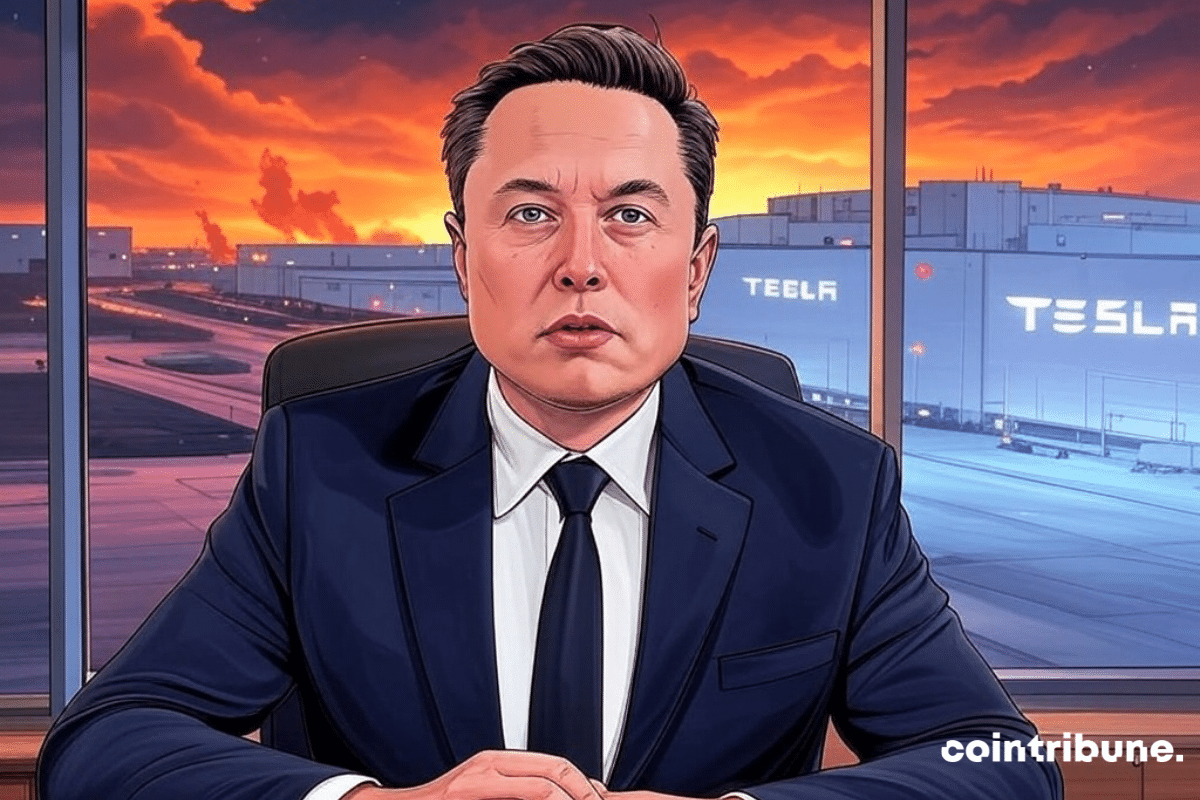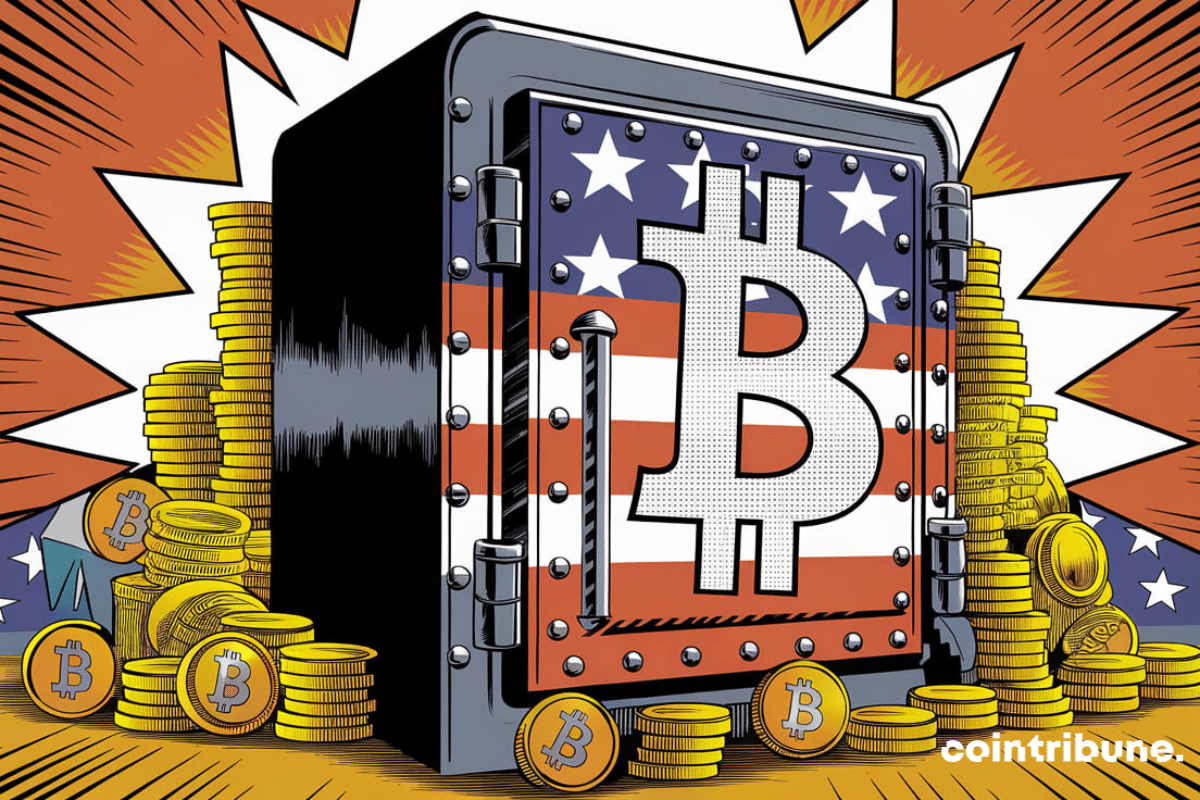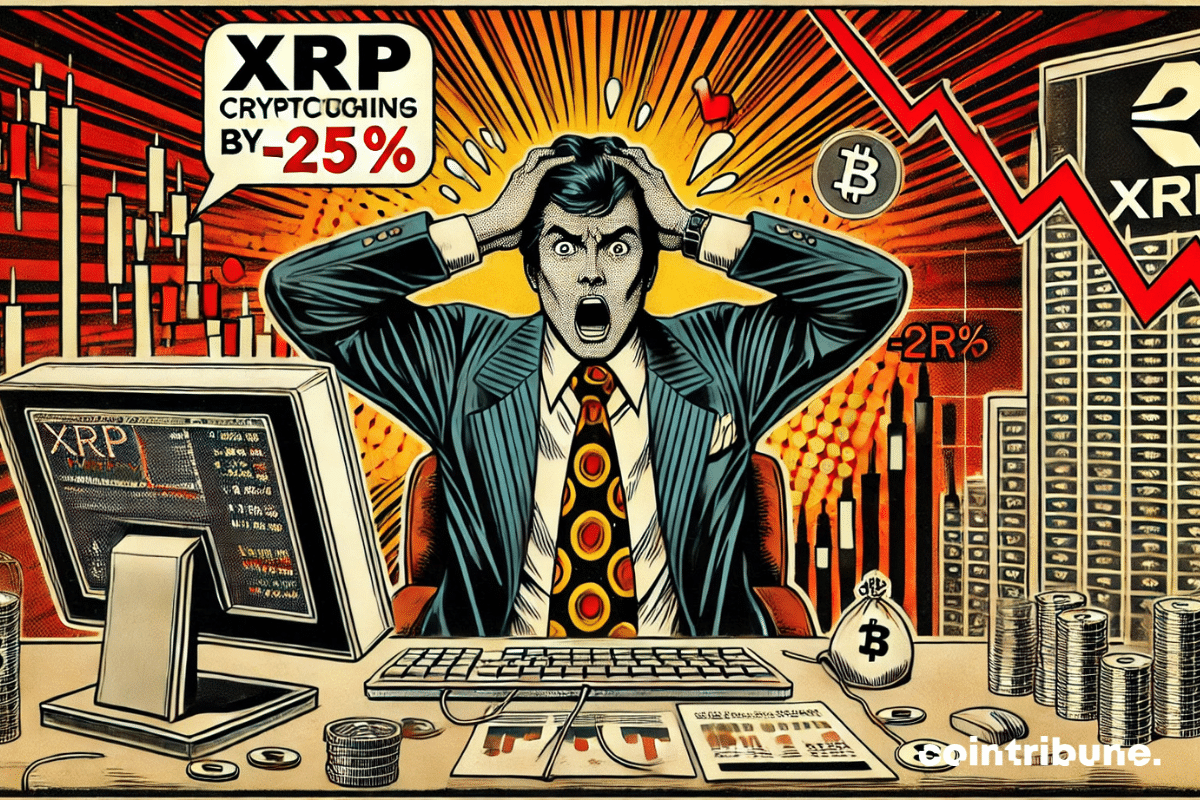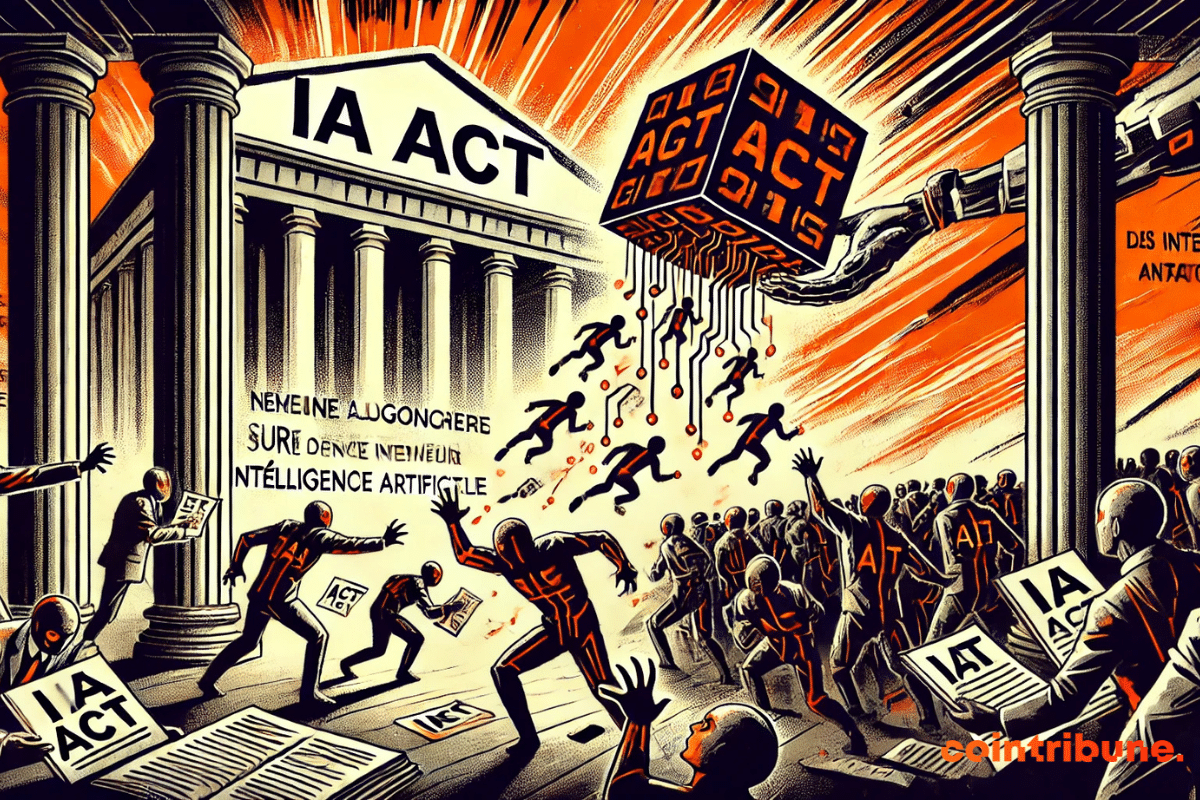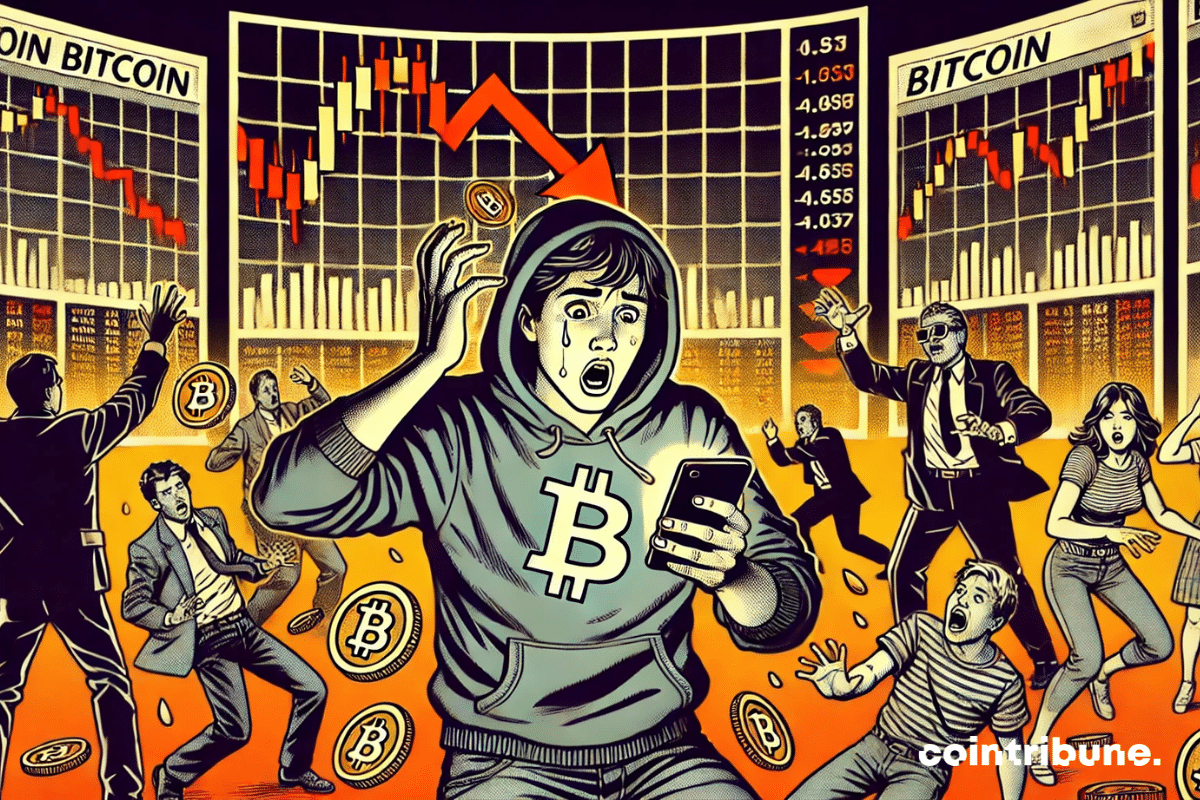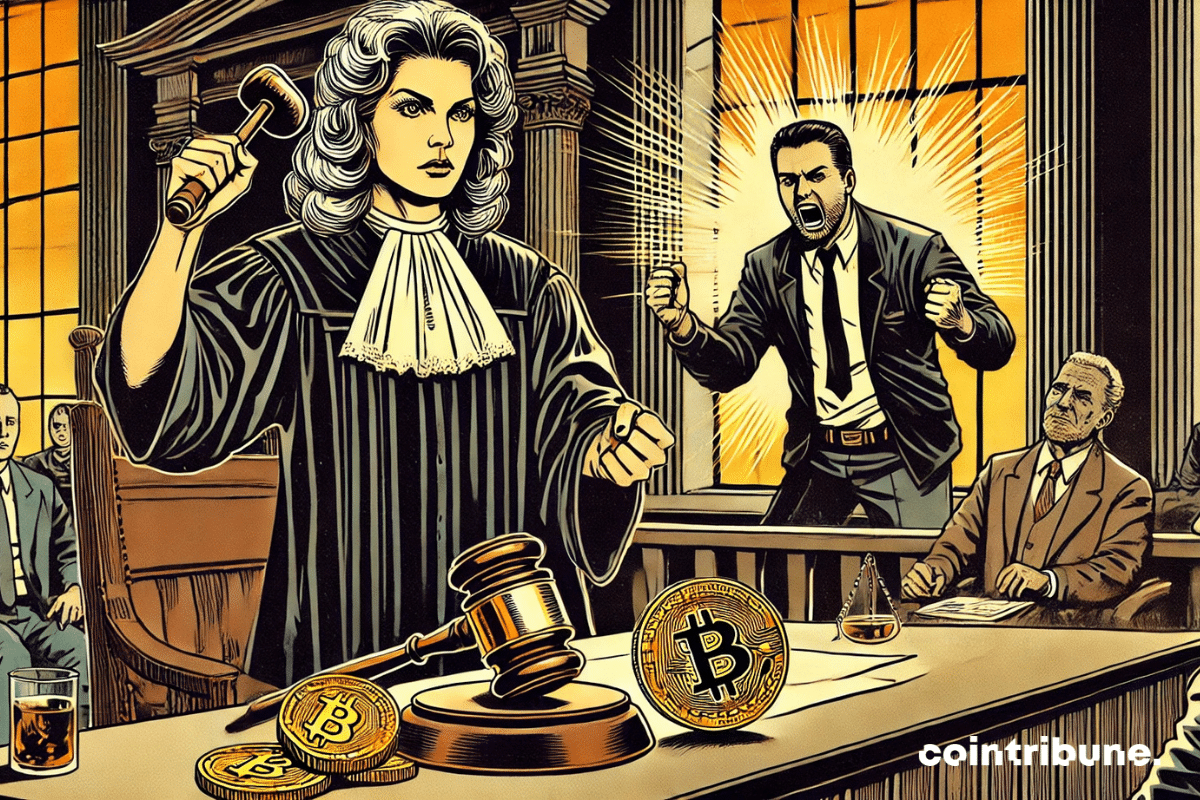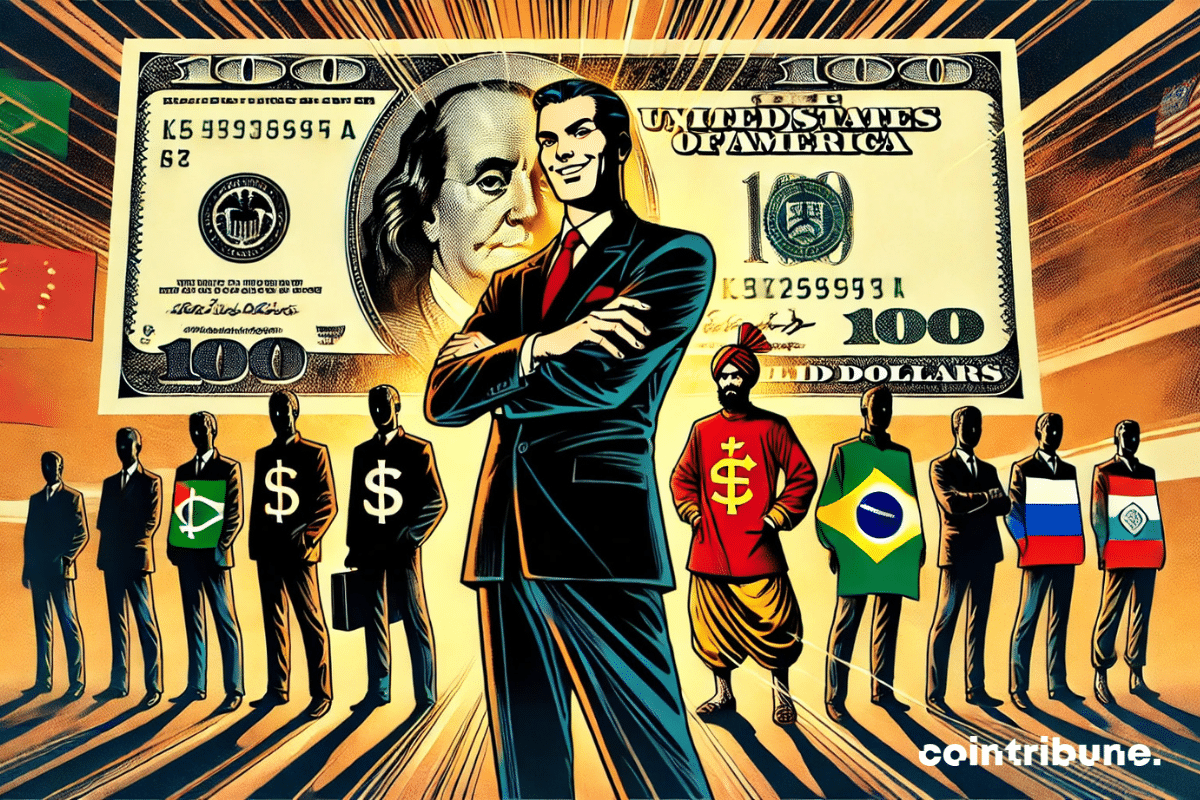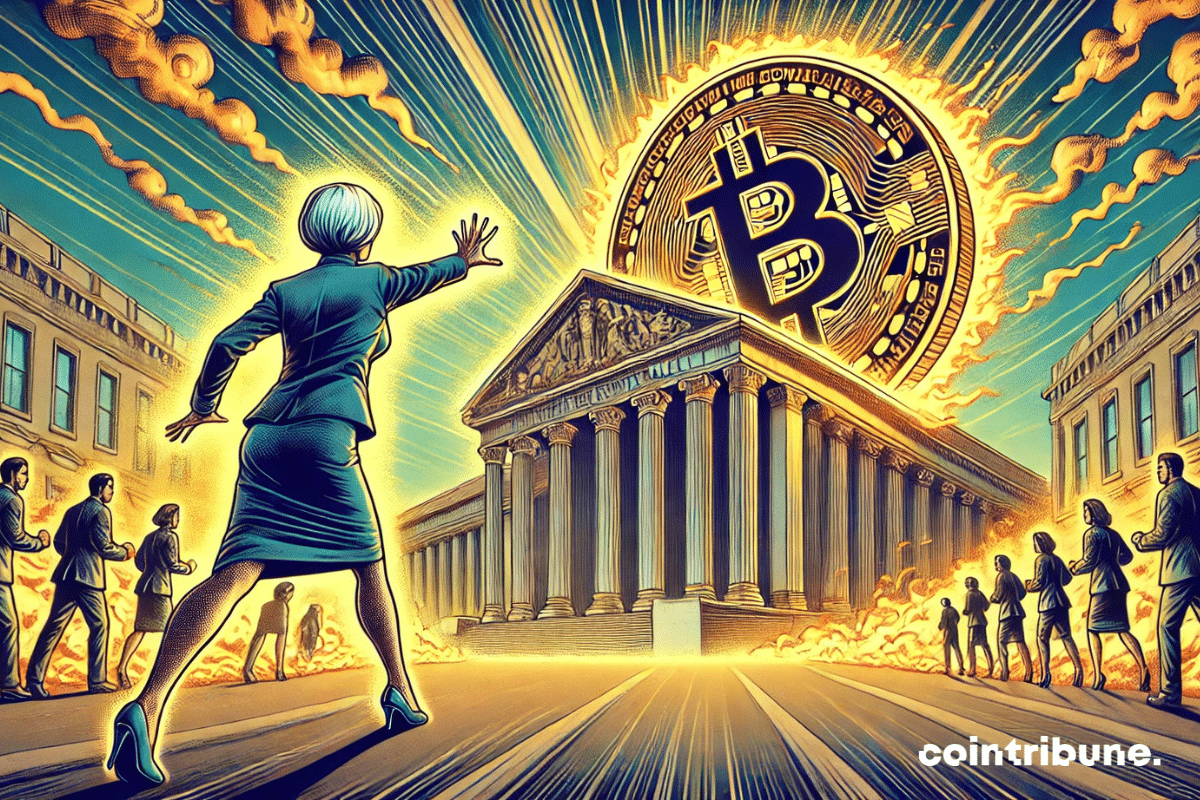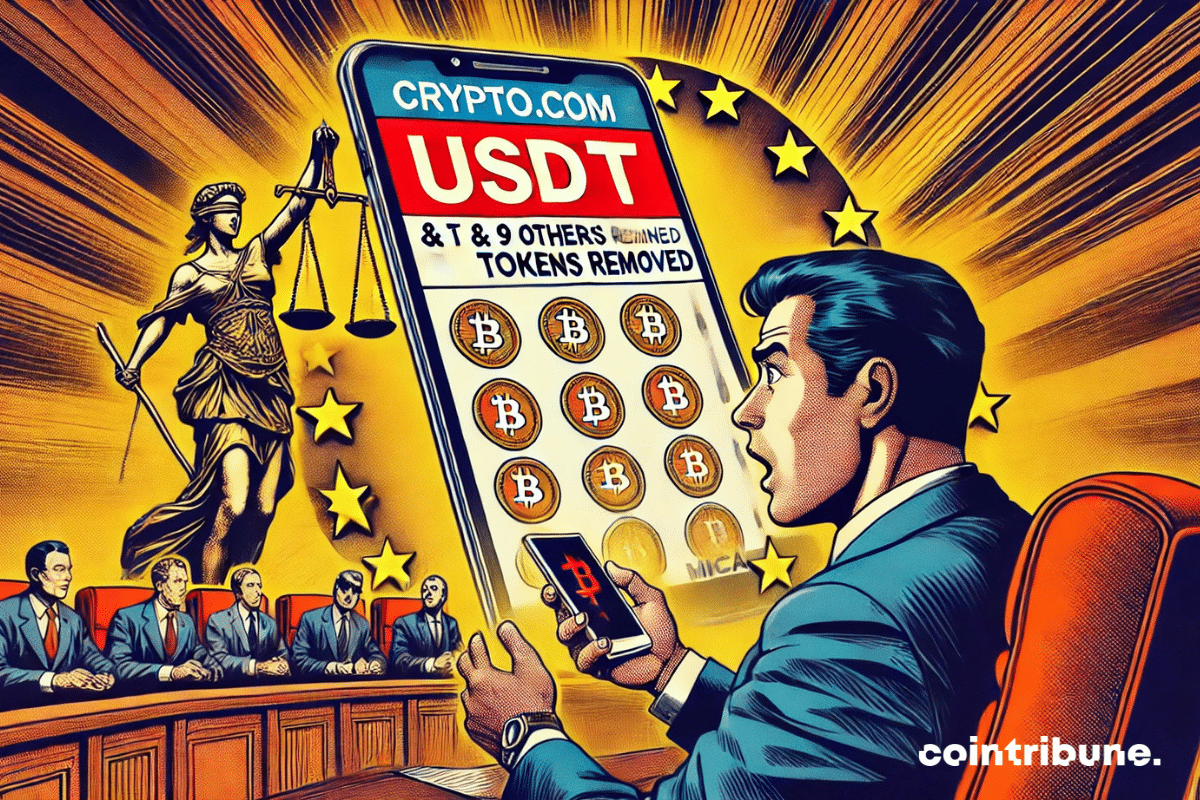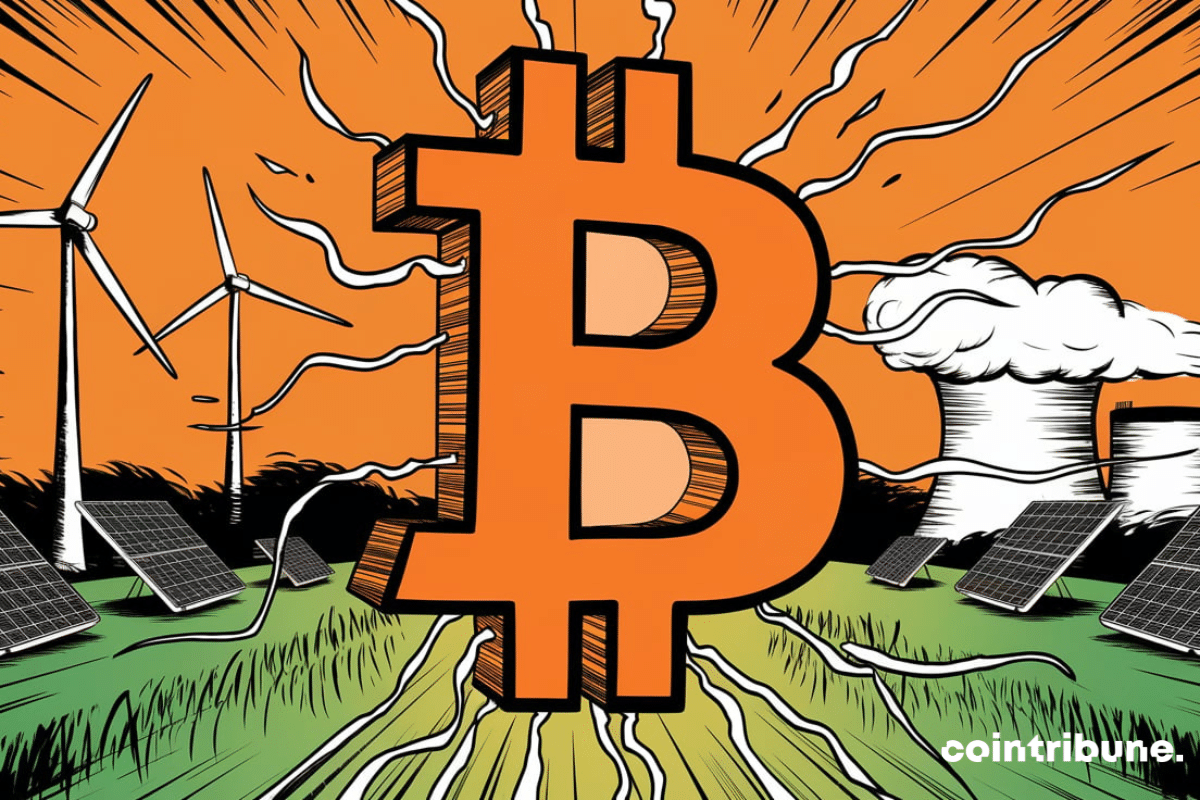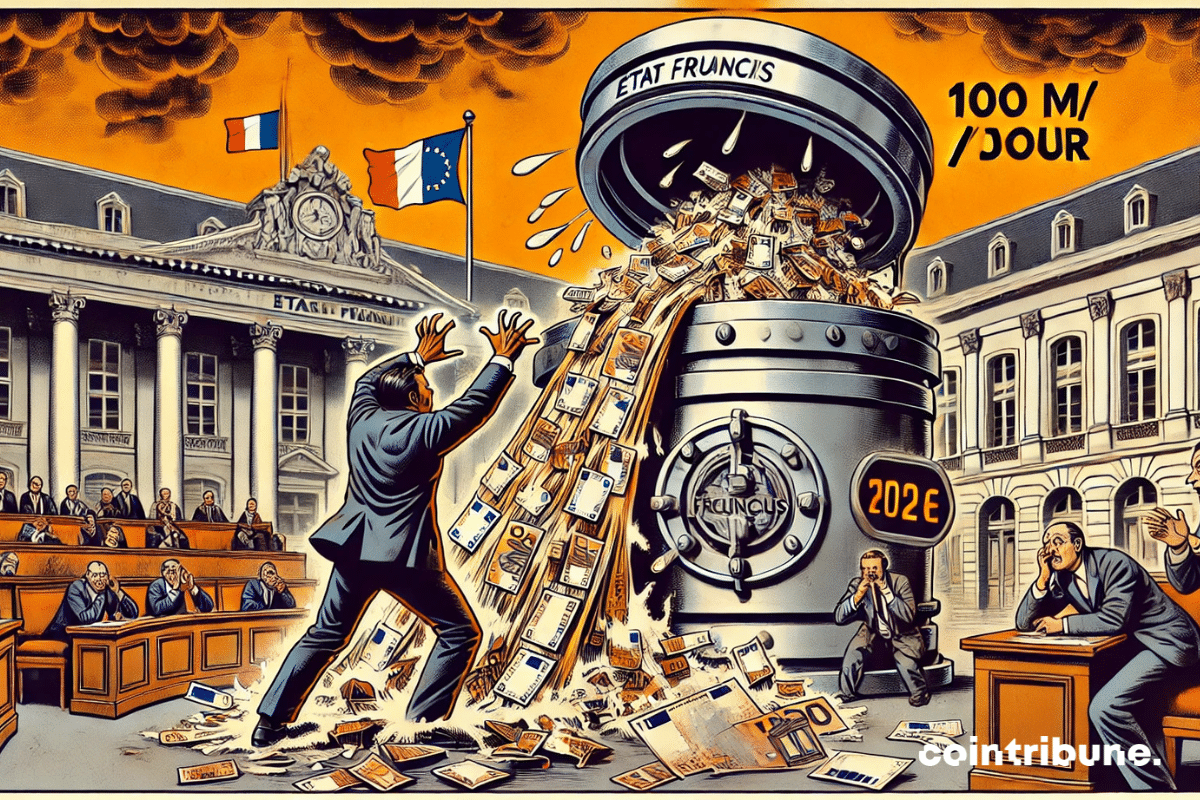Tesla, once the king of electric roads, sees its empire wobble: Europe turns away, Musk slips, and the competition hits the gas. Is the future without him?
Article long
Traditional finance and bitcoin are continuing to draw closer. Following the resounding success of its Bitcoin ETF IBIT in the United States, BlackRock, the world's largest asset manager, is preparing to take a new step: the launch of a Bitcoin Exchange Traded Product (ETP) in Europe. This fund, which will be domiciled in Switzerland, reflects the growing desire of financial institutions to establish a lasting presence in the crypto market. While the United States has seen Bitcoin ETFs capture more than $57 billion in assets in just a few months, this new product could change the European landscape. Why Switzerland rather than another country? What will be the effects on investors and the institutional adoption of bitcoin in Europe? These are all questions that arise as BlackRock accelerates its international offensive.
Solana signs a spectacular performance in the fourth quarter of 2024 with a 213% increase in revenue generated by its applications, amounting to $840 million compared to $268 million in the previous quarter. This rapid surge is based on the explosion of memecoin trading, as well as the rise of tokens related to artificial intelligence. Once criticized for its repeated outages, the blockchain now establishes itself as a key player in the sector, attracting traders, developers, and investors. This swift transformation, indicated by Messari, illustrates Solana's evolution towards a more structured ecosystem, fueled by growing adoption and a massive influx of liquidity.
The creation by Donald Trump of a sovereign fund overseen by Howard Lutnick is very promising for the bitcoin reserve.
After reaching a new ATH of $109,354, Bitcoin is facing selling pressure, resulting in a decline in its price. Let's together examine the technical outlook for BTC.
Dogecoin (DOGE) is experiencing a period of instability. The memecoin is losing ground and is now below $0.30. This sharp decline revives uncertainty among investors as selling pressure increases. However, some analysts see it as merely a technical pullback, necessary before a new leap to unprecedented heights. Trader Tardigrade and DOGECAPITAL, influential figures in the market, believe that this correction fits into a larger bullish cycle, already observed in the past. In 2016 and 2021, Dogecoin experienced similar drops before soaring by 9,222% and 30,693%, respectively. If history repeats itself, DOGE could soon embark on a spectacular rise. But is this scenario really credible?
A key step has been taken in the regulation of the crypto market in the United States. Under the leadership of Mark Uyeda, acting chair, the Securities and Exchange Commission (SEC) has announced the creation of a Crypto Task Force, an entity responsible for providing more clarity to the rules governing cryptocurrencies. To structure its actions, the SEC has launched a dedicated website that offers companies and investors a space to submit their proposals and better understand regulatory requirements. This initiative comes as the crypto sector calls for clear guidelines and as the SEC faces off against the Commodity Futures Trading Commission (CFTC) over the issue of jurisdiction for cryptocurrencies. In addition to defining the boundary between securities and unregulated assets, this task force could shape the future of crypto ETFs and influence the oversight of trading platforms. However, its real impact will depend on its ability to establish a constructive dialogue with the industry, an approach that is still lacking in the SEC's current policy.
The tug-of-war between the crypto industry and American banking regulators is reaching a decisive turn. For several years, companies in the sector have denounced restrictions that limit their access to traditional banking services. This phenomenon of "debanking," perceived as an unjustified impediment, hampers their development and fuels a climate of uncertainty. In response to this situation, Coinbase is stepping up. In a letter addressed to the Federal Reserve (Fed), the Federal Deposit Insurance Corporation (FDIC), and the Office of the Comptroller of the Currency (OCC), the platform demands the removal of obstacles that prevent banks from collaborating with crypto players. Coinbase is asking for the cancellation of an OCC directive, as the platform believes it imposes an excessive approval process for new banking activities related to cryptos. The company considers this approach contrary to the law and calls on regulators to officially recognize the right of banks to offer custody and execution services for cryptos. This offensive comes as the debate gains political momentum. Under pressure from Republican lawmakers, Congress is holding two key hearings this week, in the Senate and the House of Representatives, to examine these controversial practices. The outcome of these discussions could redefine the regulatory framework of the crypto industry in the United States.
In an unprecedented turn for American economic policy, Donald Trump has signed a presidential decree that creates a national sovereign wealth fund, a groundbreaking initiative in the United States. This financial instrument aims to stimulate economic growth, fund strategic infrastructure, and potentially enable the acquisition of TikTok. The platform, under scrutiny from Washington for national security reasons, must divest itself of its Chinese shareholders in order to continue operations on American soil. Drawing inspiration from the sovereign wealth fund models of China, Norway, and Singapore, the Trump administration hopes to reduce U.S. dependence on borrowing and enhance its global economic influence. However, the establishment of such a mechanism raises numerous questions: how could a country that is accumulating massive budget deficits finance such a project? What would be the geopolitical implications of a direct intervention in a globally significant technology company? Balancing economic ambition with diplomatic challenges, this sovereign wealth fund represents a major shift that could redefine the role of the American state on the international stage.
Trade tensions between the United States and its major partners have resurfaced, reviving the specter of a new economic war. Washington has announced an increase in tariffs targeting Canada, Mexico, and China, a decision that marks the return of the protectionism favored by Donald Trump. This tariff offensive has immediately sparked reactions everywhere, particularly in Europe, where the European Commission is closely monitoring the situation. Although the European Union is not yet directly affected, Brussels fears an expansion of American measures and warns that it will not remain passive. The Commission has already expressed its strong disagreement with this policy and states that it is ready to adopt retaliatory measures to protect the continent's economic interests. In the face of this new trade offensive from the United States, the risk of escalation between the two blocs cannot be ruled out.
The deficit is growing, taxes are rising, but Bayrou persists. Clinging to his 49.3 like a castaway to his buoy, he defies the political storm that is looming.
The crypto market is experiencing significant instability, and XRP is bearing the brunt of it. Indeed, the asset linked to Ripple has plunged by 25%, reaching an unprecedented low in several weeks. This brutal correction is not limited to XRP. Bitcoin has dropped by 6.35%, while Dogecoin has recorded nearly a 25% loss. This widespread pullback can be explained by an explosive cocktail of economic tensions and heightened speculative movements. The uncertainty surrounding traditional financial markets, particularly in the United States, fuels crypto volatility. In this context, one question remains: is XRP beginning a new descent, or is this a strategic low for opportunistic investors?
Amid revolutionary announcements, technological developments, and regulatory turbulence, the crypto ecosystem continues to prove that it is both a territory of limitless innovations and a battleground of regulatory and economic struggles. Here is a summary of the most significant news from the past week surrounding Bitcoin, Ethereum, Binance, Solana, and Ripple.
The United States is reviving trade tensions with its major economic partners. Donald Trump has just announced massive new tariffs on imports from Canada, Mexico, and China, and is reigniting an aggressive protectionist policy. Presented as a response to the fight against fentanyl trafficking and illegal immigration, this decision primarily fits into a broader strategy aimed at renegotiating North American trade agreements and protecting the American industry from Chinese competition. This escalation has immediately provoked a virulent reaction from the targeted countries, which are already preparing retaliatory measures, foreshadowing a new economic showdown with uncertain consequences.
The EU, always quick to unleash paperwork before innovation, will implement its AI Act this Sunday: spectacular bans, imposed transparency, massive sanctions... AI had better watch out.
Financial markets sometimes hold paradoxes. While Bitcoin is experiencing a new surge, surpassing the symbolic threshold of 100,000 dollars, one surprising element stands out: the absence of individual investors. After the Federal Open Market Committee (FOMC) meeting, the Bitcoin futures market witnessed a rapid rise, with an increase of 1.2 billion dollars in just 24 hours. However, instead of widespread enthusiasm, the data reveals a significant retreat of small investors, whose activity has dropped by 50% since November 2024. This phenomenon highlights a profound transformation in the market, where financial institutions are taking over from individuals. Should we see this as a mere cyclical adjustment or a lasting change in the evolution of Bitcoin?
Court decisions regarding cryptocurrencies play a key role in the evolution of sector regulation. Indeed, when it comes to stolen funds, the issue becomes even more sensitive, as it pits the principle of confiscation against that of restitution to the victims. The case of the Bitfinex hack in 2016, one of the largest Bitcoin thefts in history, crystallizes these tensions. After the seizure of 94,643 BTC by US authorities, the courts are questioning the appropriateness of returning them to Bitfinex. Such a decision could create a major legal precedent, which would influence the future management of cryptocurrencies seized by the courts.
Artificial intelligence has become a major strategic issue. From the United States to China, passing through Europe, economic powers are competing to dominate this key sector. Far from standing on the sidelines, India has just announced the development of its own generative AI model, scheduled for 2025. With a massive acquisition of graphics processors and a $20 billion investment plan in infrastructure, the country shows a clear ambition: to strengthen its digital sovereignty and assert its technological autonomy. This initiative comes as technological tensions between Washington and Beijing are escalating and as American restrictions on Nvidia chips complicate access to cutting-edge technologies. At the same time, the emergence of open-source models like DeepSeek R1 is shaking up the rules of the game, proving that it is possible to develop a high-performing AI without having the same resources as the industry giants.
Europe is tightening its regulatory framework on stablecoins, and Kraken is forced to adapt. Indeed, the exchange announced the withdrawal of USDT and other stablecoins for users in the European Economic Area (EEA) before March 31, in response to the requirements of the MiCA regulation. This text imposes strict criteria on stablecoin issuers and limits their circulation in Europe. Such a decision illustrates a major shift for the European crypto market. As Kraken joins the list of platforms that comply with this regulation, investors must now choose between adapting to the new constraints or exploring other solutions. This transition could reduce the accessibility of the most popular stablecoins, but also redistribute the cards among market players.
The status of the US dollar in the global economy once again causes tensions. While the BRICS seek to free themselves from its hegemony, Donald Trump brushed aside any possibility of dedollarization. "There is no chance that the BRICS will replace the US dollar in international trade or elsewhere," he stated. This declaration comes at a time when China, Russia, and their allies are intensifying their efforts to limit their dependence on the greenback, particularly through exchanges in local currencies and the establishment of alternative financial infrastructures. Behind this statement from the American president, one question arises: is the dollar really unassailable, or are we witnessing the beginnings of a new monetary order?
The integration of bitcoin into the reserves of central banks deeply divides economic actors. On one side, some governors advocate for a diversification of assets to adapt monetary strategies to a changing world. On the other, the European Central Bank (ECB) takes a firm stance and categorically rejects any legitimacy of bitcoin as a store of value. This debate has taken on a new dimension following Christine Lagarde's statements. When asked at a press conference, the ECB president abruptly dismissed speculation, asserting that bitcoin did not meet any of the required criteria to be included in the central banks' reserves: "liquid, safe, and secure." This stance contrasts with that of the governor of the Czech National Bank, Aleš Michl, who is open to the idea of exploring new asset classes. This growing divergence illustrates the rift between a conservative approach to the financial system and a more pragmatic vision, championed by some decision-makers who seek to anticipate upcoming monetary transformations.
The crypto market is undergoing a profound transformation, and Bitcoin is more than ever the central element of the digital financial landscape. While previous cycles saw altcoins capitalize on BTC's rise to gain ground, the current dynamics are taking an unprecedented turn. Institutional investors are massively favoring Bitcoin, neglecting thousands of tokens that continue to proliferate. Its dominance index surged by 15.5% in January 2025, reaching nearly 59%, a level that illustrates a clear imbalance between BTC and the rest of the market. This rise to power is not solely due to the influx of capital. Political decisions, ETF performances, and the exhaustion of altcoins are contributing to reinforce the supremacy of the king of crypto. In light of these transformations, is Bitcoin on the verge of permanently detaching itself from the traditional crypto market?
In a constantly changing world, where every political decision redraws the contours of power, a major phenomenon is emerging: the rise of the BRICS. This acronym, once seen as a symbolic grouping of major emerging economies, now asserts itself as a driving force of geopolitical balance. With the recent expansion of this bloc to new influential members, the global landscape is enriched with unprecedented dynamics, challenging the hegemony of Western institutions. While Donald Trump embarks on a second term in the United States, focused on a protectionist and isolationist policy, the rise of the BRICS represents a strategic challenge with profound implications.
The Chinese AI DeepSeek has caused an earthquake within American tech. The geopolitical power dynamics have just changed.
The semiconductor industry has become the battleground of a technological war between the United States and China. Washington, concerned about preserving its strategic advantage in artificial intelligence, has already imposed several restrictions on the export of high-performance chips. Despite these measures, China has continued to make progress, prompting Donald Trump to consider further tightening the limitations aimed at Nvidia. This project could reshape the balances of the global AI market and weaken American companies. Between national security imperatives and economic stakes, this decision fits into a strategy aimed at curbing Beijing's technological rise. However, the effectiveness of these restrictions remains uncertain, as Chinese companies double down on efforts to circumvent these sanctions and develop their own alternatives.
The European Union is intensifying its control over non-compliant stablecoins in accordance with its new regulations. Crypto.com has just announced the removal of Tether (USDT) and nine other cryptocurrencies in Europe, a decision that marks a shift for the sector. Such an initiative directly responds to the requirements of the MiCA regulation (Markets in Crypto-Assets Regulation), which imposes strict oversight of stablecoins and associated services. Following Coinbase, which removed USDT in October 2024, Crypto.com is following suit and imposing a precise timeline on its users. As of January 31, 2025, the purchasing and depositing of these assets will be banned on its European platform. Starting March 31, the remaining funds will be automatically converted into MiCA-compliant stablecoins. This removal goes beyond mere compliance. It reshapes the stablecoin landscape in Europe, where exchanges must now adapt to the new rules or risk sanctions. In a rapidly changing market, this announcement underscores the regulators' desire to impose a strict framework and raises uncertainties about the future of decentralized stablecoins in the EU.
Monetary tensions are intensifying as the BRICS accelerate their quest for independence from the US dollar. This dynamic is upending global economic strategies and prompting major powers to rethink their financial reserves. Currently, the Trump administration has announced the creation of a "strategic crypto stock," reigniting an explosive debate between bitcoin supporters and those of XRP. Some see it as an official recognition of the role of these assets in monetary policy, while others question which cryptos will actually be integrated. Beyond technological rivalry, this confrontation reveals major geopolitical stakes: the choice of the BRICS between bitcoin, XRP, or another crypto could reshape the balance of global reserves and redefine power dynamics among states.
After Texas, Russia is also turning to the Bitcoin industry to balance its electrical grid and reduce costs. When will France wake up? And Germany?
The crypto market alternates between spectacular surges and abrupt corrections, and Solana is no exception. After a tumultuous start to the year marked by heightened volatility, the SOL token has lost 17.2% in just three days, bringing its price down to $235. This drop, although brutal, does not solely summarize the situation of the ecosystem. Behind the decline in price, contrasting signals are emerging. On one hand, on-chain activity is collapsing with a 40% drop in transaction volumes, weakening major platforms like Orca (-62%) and Meteora (-45%). On the other hand, Total Value Locked (TVL) soars by 27%, surpassing Ethereum and BNB Chain, thanks to platforms like Raydium and Binance Staked SOL. Thus, investors are still hesitant to bet on a true rebound. Three key factors will determine whether Solana can reverse the trend and return to its historic highs.
For several decades, French budget management has been a source of recurring tensions, but the current situation has reached an unprecedented level. In 2025, the censorship of the budget voted by the Senate plunged the country into a major financial crisis, with losses estimated at 100 million euros per day. In the absence of a new text validated by the National Assembly, the budget for 2024 remains in effect, depriving the state of essential revenue and savings measures. Amélie de Montchalin, Minister for Public Accounts, warns about the repercussions of this deadlock and emphasizes both its economic cost and the institutional challenges it reveals.
